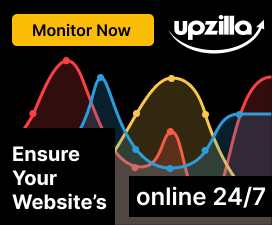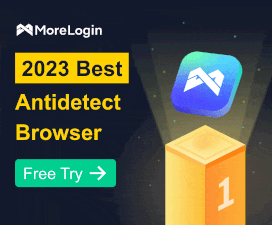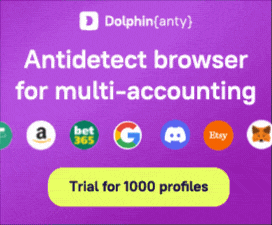What is the most important part in a website?
- Thread starter Harry P
- Start date
velvet
New member
- Joined
- Feb 14, 2016
- Messages
- 56
- Points
- 0
Hi Harry,
that is a difficult question as there are so many requirements, and different websites have different tasks.
I am pretty much done with SEO, unless it is for a local site.
I always get a descriptive Domain Name anyway.
I generally create multiple small pages, rather than long endless pages, so Loading Time is important, and that's also better for finding stuff too.
I have settled on one Web Template for any standard site as it is so flexible you can do anything with it.
For sales funnels and such I only use one Plugin/Template system.
So Content it has to be.
Really, if your content is killer, it does'nt matter so much what a site looks like does it?
Wow, I finally got there!
You're stressing my brain Harry... :>)
cheers, Mal.
that is a difficult question as there are so many requirements, and different websites have different tasks.
I am pretty much done with SEO, unless it is for a local site.
I always get a descriptive Domain Name anyway.
I generally create multiple small pages, rather than long endless pages, so Loading Time is important, and that's also better for finding stuff too.
I have settled on one Web Template for any standard site as it is so flexible you can do anything with it.
For sales funnels and such I only use one Plugin/Template system.
So Content it has to be.
Really, if your content is killer, it does'nt matter so much what a site looks like does it?
Wow, I finally got there!
You're stressing my brain Harry... :>)
cheers, Mal.
Ron Killian
New member
- Joined
- Dec 3, 2015
- Messages
- 804
- Points
- 0
I would say it's loading time. No matter how good your content is, doesn't matter if visitors don't stay around long enough to read it.
Next would be content.
Then template.
Yes, I agree that is your content is that good, the layout or look of the site should not matter that much. But... how it looks good or bad, can make an impression, negative or positive, on your visitors.
Guess then domain name. If you want people to remember it or be able to type it in later.
SEO only if that is a priority. But again, with out the items above, it might not matter anyways.
Just my opinion
Next would be content.
Then template.
Yes, I agree that is your content is that good, the layout or look of the site should not matter that much. But... how it looks good or bad, can make an impression, negative or positive, on your visitors.
Guess then domain name. If you want people to remember it or be able to type it in later.
SEO only if that is a priority. But again, with out the items above, it might not matter anyways.
Just my opinion
ProxyRadar
New member
- Joined
- Sep 19, 2015
- Messages
- 10
- Points
- 0
Every aspect are important, but, surely, content is the most important. Sites are making for peoples, and I'm not going to read and refer to the boring posts on the site with a beautiful design.
vishwa
Well-known member
- Joined
- May 12, 2014
- Messages
- 1,147
- Points
- 63
I think all of them are important part of a website. Content is a soul of a website. Page loading speed is an important part of your website. No body likes website which loads very slowly. A good template or theme can make your website looks beautiful and elegant which will attract visitors. So, Overall every factor is work simultaneously to make a website perfect.
EpicGlobalWeb
New member
- Joined
- Jan 24, 2016
- Messages
- 467
- Points
- 0
Loading time vs content is one of those arguments that causes a catch 22 problem. You need exposure, sure, but you also need readers / viewers engaging in some kind of call to action. You eventually need to sell something.
Contrary to some belief, WordPress is somewhat bulky software. A large WordPress site isn't can be a resource hog. At the same time, internet speeds are getting faster and faster but then attention spans are shortening on the average. There are measures that can be taken to optimize / compress images (text itself is too minimal to worry about, even a lot of it).
Icons that are responsive are actually fonts. They are either loaded from a CDN or a file on your server, depending on what your developer decided to do.
Because of technologies like Bootstrap, Font Awesome, Glyphicons, jQuery, and the names you know which make up modern HTML5, most of that is already on the typical user's device and shouldn't cost any notable load time. To be sure, you can optimize for time by exclusively using a CDN for these technologies.
Another effective way to better your load time without compromising on content volume is to call the JS libraries and CSS at the bottom of your page. This way the content loads first, then styles and prepares for events later. It's not always possible to do this, but for most of the time you can get away with it.
Study the golden triangle. This was where Google searches were tested by heat map to see where eyes moved during a search query. They found that the eyes move to places where content is different at times. Let's see what I mean. Go to Google and search for "big data." Where did your eyes look? They looked at the first result, and the last result that you could see if you're like most people. If they didn't, it's because you're an IM and you're immune to these data points.
Now do another search for "avatar." Your eyes looked here:

So as you can see, the golden triangle is all about where are the eyes going? You can force eye movement with animations and color, usually. Animation is more effective because people have different color preferences, but color is hit or miss. The reason why I bring this up is because obviously advanced conversion applications like these are going to be just as important as "lots" of content. "Lots" of content gets you indexed, but good, conversion-centric content keeps them engaged.
Contrary to some belief, WordPress is somewhat bulky software. A large WordPress site isn't can be a resource hog. At the same time, internet speeds are getting faster and faster but then attention spans are shortening on the average. There are measures that can be taken to optimize / compress images (text itself is too minimal to worry about, even a lot of it).
Icons that are responsive are actually fonts. They are either loaded from a CDN or a file on your server, depending on what your developer decided to do.
Because of technologies like Bootstrap, Font Awesome, Glyphicons, jQuery, and the names you know which make up modern HTML5, most of that is already on the typical user's device and shouldn't cost any notable load time. To be sure, you can optimize for time by exclusively using a CDN for these technologies.
Another effective way to better your load time without compromising on content volume is to call the JS libraries and CSS at the bottom of your page. This way the content loads first, then styles and prepares for events later. It's not always possible to do this, but for most of the time you can get away with it.
Study the golden triangle. This was where Google searches were tested by heat map to see where eyes moved during a search query. They found that the eyes move to places where content is different at times. Let's see what I mean. Go to Google and search for "big data." Where did your eyes look? They looked at the first result, and the last result that you could see if you're like most people. If they didn't, it's because you're an IM and you're immune to these data points.
Now do another search for "avatar." Your eyes looked here:

So as you can see, the golden triangle is all about where are the eyes going? You can force eye movement with animations and color, usually. Animation is more effective because people have different color preferences, but color is hit or miss. The reason why I bring this up is because obviously advanced conversion applications like these are going to be just as important as "lots" of content. "Lots" of content gets you indexed, but good, conversion-centric content keeps them engaged.
Claire_Anderson
New member
- Joined
- Aug 10, 2016
- Messages
- 63
- Points
- 0
The most important parts in a website are mentioned below:
First important thing is you website template and your website speed. If your website will have a professional look in the design then the users will look at your website contents. If it would has low quality design then the users would think that the website is offering poor contents and they will not bother looking at the website contents. That is why they say that the first impression matters. The design of the website is very important. No wonder that the companies hire the expensive designers to design a professional looking website. Website loading speed is also important. Many users switch to other websites because they load slowly. Would you use a website that loads slowly or have poor design?
The Second most important thing is the contents that your website will offer. If your website will offer same material as other websites that then the users will leave your website. Since they already have the option of other websites.
The SEO of a website is also important, the companies cannot earn anything if their website is not visible in the searching engines. No visibility is equal to no users. Every website should be optimized for the searching engines.
First important thing is you website template and your website speed. If your website will have a professional look in the design then the users will look at your website contents. If it would has low quality design then the users would think that the website is offering poor contents and they will not bother looking at the website contents. That is why they say that the first impression matters. The design of the website is very important. No wonder that the companies hire the expensive designers to design a professional looking website. Website loading speed is also important. Many users switch to other websites because they load slowly. Would you use a website that loads slowly or have poor design?
The Second most important thing is the contents that your website will offer. If your website will offer same material as other websites that then the users will leave your website. Since they already have the option of other websites.
The SEO of a website is also important, the companies cannot earn anything if their website is not visible in the searching engines. No visibility is equal to no users. Every website should be optimized for the searching engines.
Older threads
- Replies
- 15
- Views
- 6,829
- Replies
- 1
- Views
- 1,957
- Replies
- 5
- Views
- 3,415
Newer threads
- Replies
- 5
- Views
- 2,970
- Replies
- 6
- Views
- 5,667
- Replies
- 5
- Views
- 2,874
- Replies
- 10
- Views
- 9,352
Latest threads
- Replies
- 0
- Views
- 181
- Replies
- 1
- Views
- 997
- Replies
- 0
- Views
- 362
- Replies
- 1
- Views
- 403
Recommended threads
- Replies
- 5
- Views
- 3,406
- Replies
- 3
- Views
- 3,211
- Replies
- 10
- Views
- 4,210
Similar threads
- Replies
- 4
- Views
- 2,286
- Replies
- 2
- Views
- 3,307
- Replies
- 1
- Views
- 2,268
- Replies
- 13
- Views
- 31,220
Latest postsNew threads
-
New threads
-
-
-
HilltopAds Ad Network - Boost Your Website Revenue [Official Thread]
- Started by HilltopAds ad network
- Replies: 1
-
Referral contests
-
Refer Your Friends to WebmasterSun to Win Cash and Prizes!
$100 to your Paypal
View details
300 Trophy Points
1 banner ad 728x 90
Referral link for :
Latest OffersNew Reviews
-
Latest affiliate promotion
-
HilltopAds Ad Network - Boost Your Website Revenue [Official Thread]
- Latest: HilltopAds ad network
-









